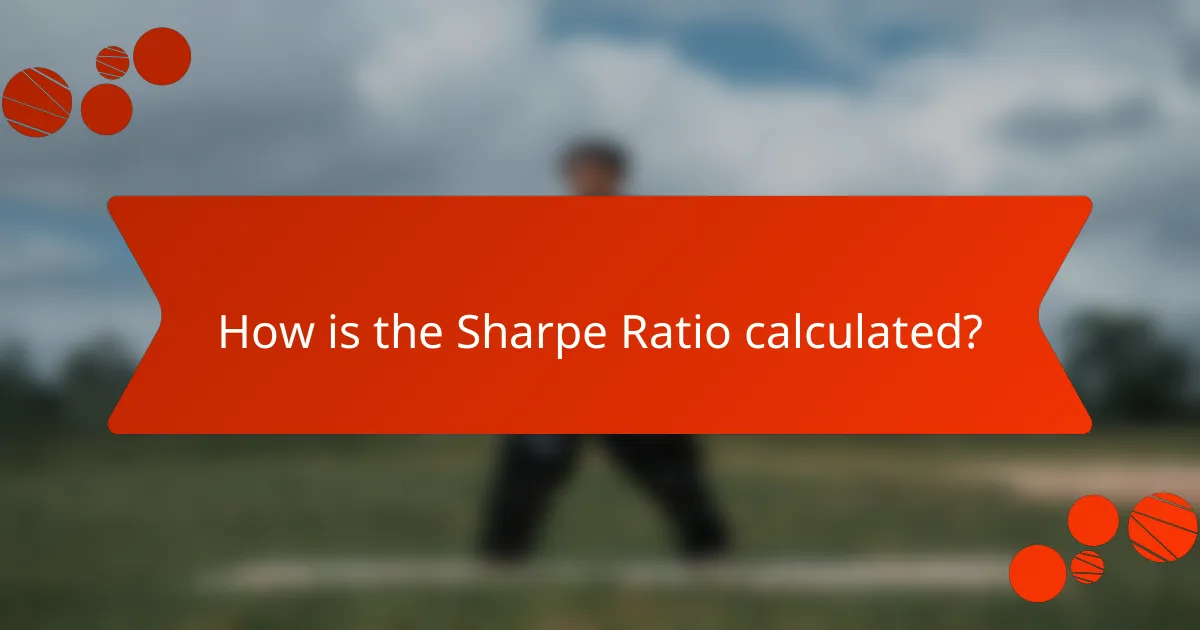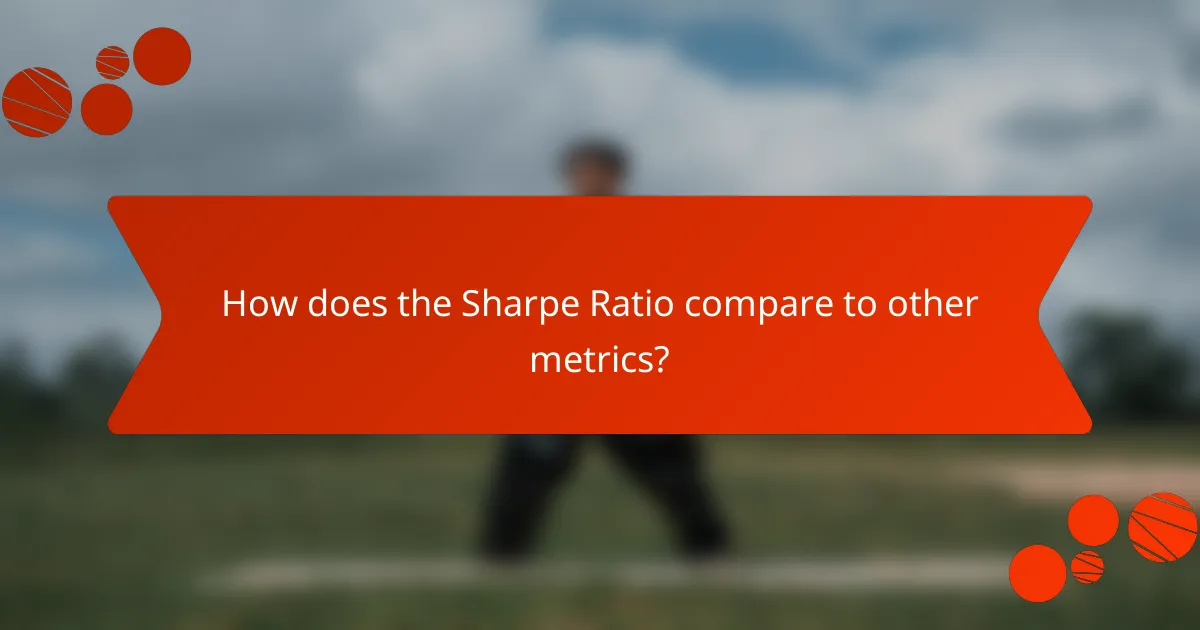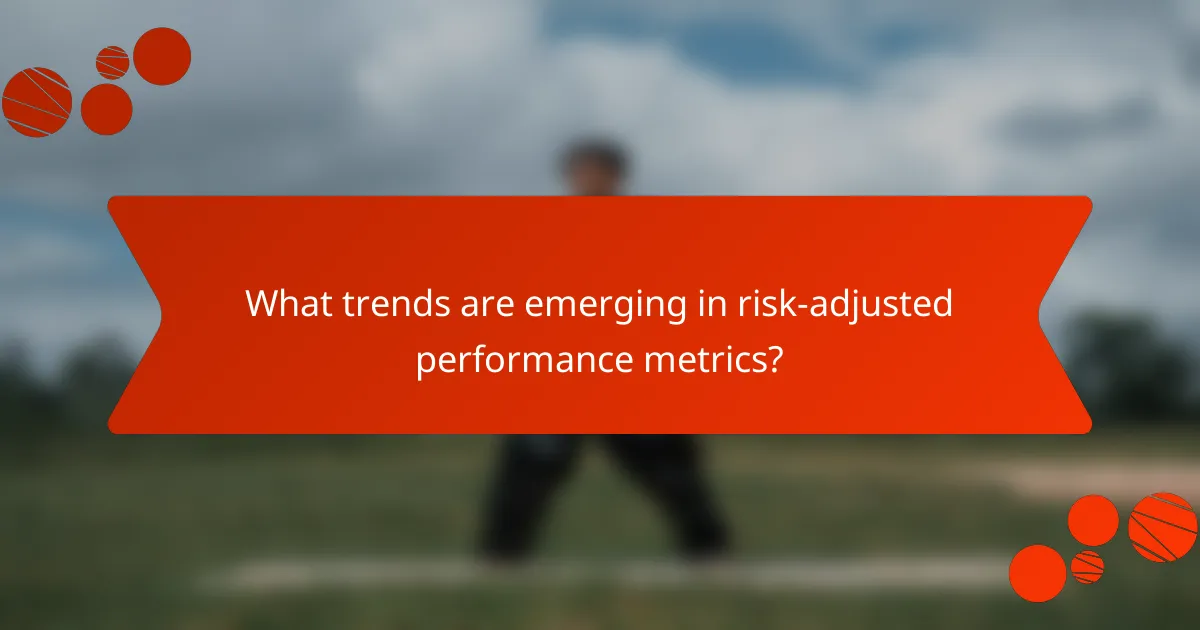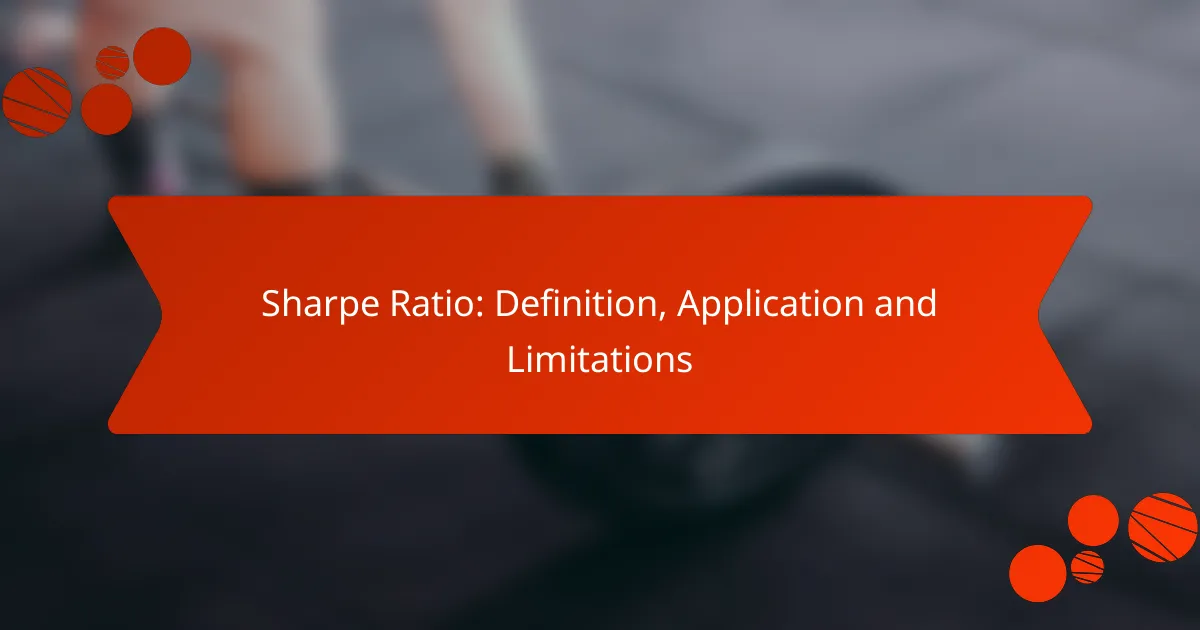The Sharpe Ratio is a key financial metric that measures the performance of an investment by comparing its return to the risk taken, calculated by adjusting the investment’s return for the risk-free rate and dividing by its standard deviation. Widely used in portfolio management, it helps investors assess performance, optimize portfolios, and compare risk-adjusted returns. However, it has limitations, including assumptions about return distributions and reliance on historical data, which can impact its effectiveness in predicting future performance.

How is the Sharpe Ratio calculated?
The Sharpe Ratio is calculated by taking the difference between the return of an investment and the risk-free rate, then dividing that by the investment’s standard deviation. This ratio helps investors understand the return of an investment compared to its risk, making it a crucial tool for evaluating performance.
Formula for Sharpe Ratio
The formula for the Sharpe Ratio is: Sharpe Ratio = (Rp – Rf) / σp, where Rp is the return of the portfolio, Rf is the risk-free rate, and σp is the standard deviation of the portfolio’s excess return. This formula quantifies how much excess return an investor receives for the extra volatility endured by holding a riskier asset.
Using this formula, a higher Sharpe Ratio indicates a more attractive risk-adjusted return. Investors often look for a Sharpe Ratio above 1, which suggests that the investment is providing a good return relative to its risk.
Components of the calculation
The calculation of the Sharpe Ratio involves three main components: the expected return of the investment, the risk-free rate, and the standard deviation of the investment’s returns. The expected return can be derived from historical performance or projected future returns.
The risk-free rate is typically represented by the yield on government bonds, such as U.S. Treasury bills. The standard deviation measures the investment’s volatility, indicating how much the returns can deviate from the average return over a specific period.
Example calculation
To illustrate the Sharpe Ratio calculation, consider an investment with an expected return of 8%, a risk-free rate of 2%, and a standard deviation of 10%. Plugging these values into the formula gives: (8% – 2%) / 10% = 0.6.
This Sharpe Ratio of 0.6 suggests that the investment’s return is not sufficiently high relative to its risk, as it is below the commonly accepted threshold of 1. Investors might consider this when evaluating whether to include this investment in their portfolio.

What are the applications of the Sharpe Ratio?
The Sharpe Ratio is widely used in finance to evaluate the performance of investment portfolios by adjusting for risk. Its applications include assessing investment performance, optimizing portfolios, and comparing risk-adjusted returns across different assets.
Investment performance evaluation
The Sharpe Ratio helps investors determine how well an investment compensates for its risk. A higher ratio indicates better risk-adjusted performance, making it easier to identify superior investments. For instance, a Sharpe Ratio above 1 is generally considered acceptable, while a ratio above 2 is viewed as excellent.
Investors can use the Sharpe Ratio to compare different funds or assets, allowing them to make informed decisions based on risk-adjusted returns rather than just raw returns. This method is particularly useful in volatile markets where risk management is crucial.
Portfolio optimization
In portfolio management, the Sharpe Ratio is a key metric for optimizing asset allocation. By maximizing the Sharpe Ratio, investors can enhance their portfolios’ overall performance while minimizing risk exposure. This involves adjusting the weights of various assets to achieve the best possible risk-return trade-off.
Investors should regularly reassess their portfolios using the Sharpe Ratio, especially during market fluctuations. This ensures that the portfolio remains aligned with their risk tolerance and investment goals, leading to more effective management strategies.
Risk-adjusted return comparison
The Sharpe Ratio facilitates the comparison of risk-adjusted returns between different investments or funds. This is particularly useful when evaluating assets with varying levels of risk. For example, comparing a high-risk stock with a low-risk bond can be done effectively using their respective Sharpe Ratios.
When comparing investments, consider the context and market conditions, as a high Sharpe Ratio in a stable market may not hold the same weight in a volatile environment. Investors should also be cautious of relying solely on this metric, as it does not account for all types of risk, such as liquidity risk or market risk.

What are the limitations of the Sharpe Ratio?
The Sharpe Ratio has several limitations that can affect its reliability as a measure of risk-adjusted return. Key issues include its assumptions about return distributions, its neglect of downside risk, and its reliance on historical data, which may not accurately predict future performance.
Assumption of normal distribution
The Sharpe Ratio assumes that asset returns follow a normal distribution, which is often not the case in real-world markets. Many assets exhibit skewness and kurtosis, leading to potential miscalculations of risk and return. This can result in an overly optimistic view of an investment’s performance.
Investors should be cautious and consider alternative measures, such as the Sortino Ratio or other metrics that account for non-normal return distributions. These alternatives can provide a more nuanced understanding of risk, particularly in volatile markets.
Ignores downside risk
One significant limitation of the Sharpe Ratio is its failure to differentiate between upside and downside volatility. It treats all fluctuations in return equally, which can misrepresent the true risk profile of an investment. Investors may be more concerned about potential losses than gains, making this a critical oversight.
To address this, consider using the Sortino Ratio, which focuses specifically on downside risk. This approach can help investors better assess the risk of loss and make more informed decisions based on their risk tolerance.
Dependence on historical data
The Sharpe Ratio relies heavily on historical data to calculate expected returns and standard deviation. This dependence can be problematic, as past performance may not accurately predict future results, especially in changing market conditions. Investors may find themselves relying on outdated information that does not reflect current risks.
To mitigate this risk, investors should complement the Sharpe Ratio with forward-looking analyses and consider various market scenarios. Regularly updating assumptions and incorporating real-time data can enhance decision-making and improve risk assessments.

How does the Sharpe Ratio compare to other metrics?
The Sharpe Ratio is a widely used metric for assessing risk-adjusted returns, but it has distinct differences when compared to other performance metrics like the Treynor Ratio and the Sortino Ratio. Each metric serves a unique purpose and is suited for different investment strategies and risk profiles.
Comparison with Treynor Ratio
The Treynor Ratio evaluates returns relative to systematic risk, measured by beta, while the Sharpe Ratio considers total risk, including both systematic and unsystematic risk. This makes the Sharpe Ratio more comprehensive for assessing overall portfolio performance, especially for diversified portfolios.
For example, a portfolio with a high Sharpe Ratio may still have a low Treynor Ratio if it has significant unsystematic risk. Investors should choose the Treynor Ratio when focusing on portfolios that are well-diversified and primarily affected by market movements.
Comparison with Sortino Ratio
The Sortino Ratio is similar to the Sharpe Ratio but focuses only on downside risk, making it a more refined measure for investors concerned about losses. While the Sharpe Ratio penalizes both upside and downside volatility, the Sortino Ratio only considers negative volatility, which can provide a clearer picture of an investment’s risk profile.
For instance, an investment might have a high Sharpe Ratio due to significant positive fluctuations, but if it also has considerable downside risk, the Sortino Ratio may reveal a less favorable risk-adjusted return. This makes the Sortino Ratio particularly useful for risk-averse investors.
When to use each metric
Use the Sharpe Ratio when evaluating overall portfolio performance and when you want to account for total volatility. It is particularly beneficial for comparing different investments or funds with varying risk levels.
Opt for the Treynor Ratio when assessing a well-diversified portfolio where market risk is the primary concern. The Sortino Ratio is ideal for investors focused on minimizing losses and who want to understand downside risk more clearly.
In practice, using a combination of these metrics can provide a more comprehensive view of an investment’s performance, allowing for better-informed decisions based on individual risk tolerance and investment goals.

What are the prerequisites for using the Sharpe Ratio?
To effectively use the Sharpe Ratio, investors need to understand risk and return, have access to historical performance data, and possess knowledge of various investment strategies. These prerequisites ensure that the ratio is applied correctly and interpreted meaningfully.
Understanding risk and return
Risk and return are fundamental concepts in investing, and the Sharpe Ratio quantifies this relationship. It measures the excess return per unit of risk, helping investors assess how well their investments compensate for the risk taken. A higher Sharpe Ratio indicates a more favorable risk-return trade-off.
Investors should be familiar with different types of risks, such as market risk, credit risk, and liquidity risk. Understanding these risks allows for better evaluation of the Sharpe Ratio in the context of specific investments or portfolios.
Access to historical performance data
Historical performance data is crucial for calculating the Sharpe Ratio accurately. Investors need reliable data on asset returns and risk-free rates over a significant period to derive meaningful insights. This data can often be sourced from financial databases or investment platforms.
When analyzing historical data, consider using at least three to five years of performance metrics to account for market fluctuations and provide a more stable basis for evaluation. Shorter time frames may lead to misleading conclusions due to market volatility.
Knowledge of investment strategies
A solid understanding of various investment strategies is essential for applying the Sharpe Ratio effectively. Different strategies may exhibit varying levels of risk and return, influencing the ratio’s interpretation. For instance, a growth-oriented strategy might have a different risk profile compared to a value-oriented approach.
Investors should also be aware of how their chosen strategies align with their risk tolerance and investment goals. This alignment ensures that the Sharpe Ratio serves as a relevant tool for decision-making rather than a one-size-fits-all metric.

What trends are emerging in risk-adjusted performance metrics?
Emerging trends in risk-adjusted performance metrics focus on enhancing accuracy and predictive capabilities through advanced technologies. Key developments include the integration of machine learning and the use of alternative data sources to refine traditional metrics like the Sharpe Ratio.
Integration of machine learning
The integration of machine learning in risk-adjusted performance metrics allows for more sophisticated analysis of investment risks and returns. Machine learning algorithms can process vast amounts of data to identify patterns and correlations that traditional methods might overlook.
For instance, machine learning can enhance the calculation of the Sharpe Ratio by incorporating real-time market data and adjusting for changing volatility. This dynamic approach can provide a more accurate reflection of an investment’s risk-adjusted performance over time.
Investors should consider using machine learning tools to analyze their portfolios. However, it’s essential to ensure that the models are robust and validated to avoid overfitting, which can lead to misleading performance assessments. Regularly updating the models with new data is crucial for maintaining their effectiveness.
